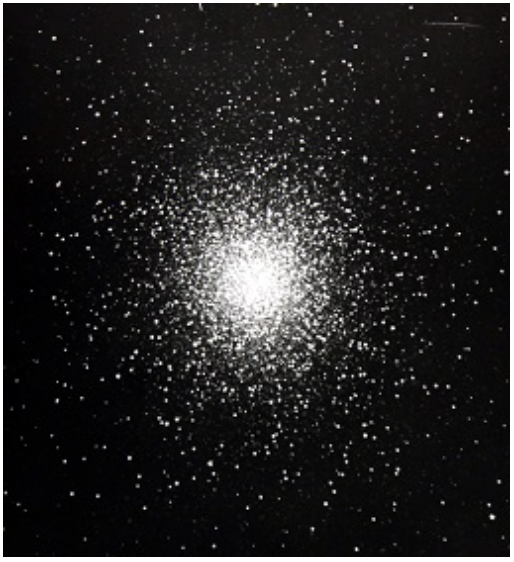On July 31, 1935, Helen Sawyer Hogg captured an image of Messier 14, an ancient globular cluster of about 150,000 stars, 30,000 light years from earth. She was one of the first female astronomers to directly operate a major research telescope. Her scientific research, professional leadership, and public outreach helped advance the study of astronomy in the 20th century.

Helen Hogg was born in 1905 at Lowell, Massachusetts, and educated at Radcliffe College and the Harvard College Observatory in Cambridge, near Boston, where she earned her doctorate in 1931 and began her lifelong study of globular clusters. That same year, she and her Canadian astronomer husband Frank Hogg moved to Victoria, British Columbia, after he accepted a position at the Dominion Astrophysical Observatory.
Helen Hogg did not have the same employment opportunity as her husband, but nevertheless continued her research. Permitted to use the observatory’s large telescope and carry out unpaid research, she undertook a program of observing globular star clusters by direct photography. She took photographs of variable stars with a 1.83-metre reflecting telescope and catalogued the cyclical changes in their brightness, identifying 132 new variable stars in Messier 2, and taking the photograph of the globular cluster Messier 14.
In 1936, Helen Hogg became a research assistant in the astronomy department at the University of Toronto, eventually rising to the rank of full professor. She worked at the university’s observatory at Richmond Hill. When it opened in May 1935, the David Dunlap Observatory housed the second-largest telescope in the world. Its custom main mirror was 35 cm and 1.87-metre in diameter, gathering light and reflecting it to a camera at the Newtonian focus at the upper end of the telescope, or to a spectrograph placed at the Cassegrain focus on the other side of the main mirror. During four decades at the observatory, Helen Hogg took roughly 2,700 photographs of 52 globular clusters. The data she collected provided a basis for estimating the age of our galaxy and advanced scientific understandings of its evolution.
Throughout her career, Helen Hogg helped popularize and advance the science of astronomy within Canada, serving for example as founding president of the Canadian Astronomical Society and authoring a weekly column for the Toronto Star (“With the Stars”) for more than 30 years. In 1968, she received the Medal of Service from the Order of Canada before being promoted within the Order of Canada to the rank of Companion in 1976.

The Dominion Astrophysical Observatory and the David Dunlap Observatory are designated national historic sites. The Historic Sites and Monuments Board of Canada (HSMBC) advises the Government of Canada on the commemoration of National Historic Sites, which can include a wide range of historic places such as gardens, cemeteries, complexes of buildings and cultural landscapes.
The National Program of Historical Commemoration relies on the participation of Canadians in the identification of places, events and persons of national historic significance. Any member of the public can nominate a topic for consideration by the Historic Sites and Monuments Board of Canada. Information on how to participate in this process is available here: https://parks.canada.ca/culture/designation/ressources-resources
This story was provided by Parks Canada. Click here for more information. Images provided by The RASC Archives.
